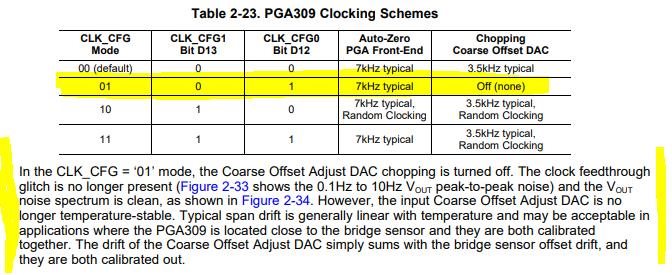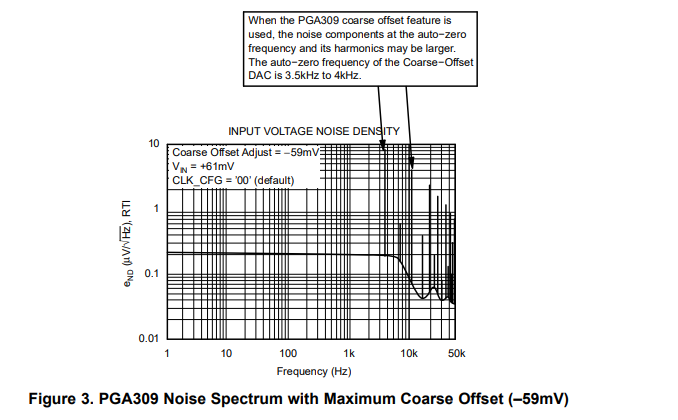Team,
my customer encounters noise issues in their pressure sensors using PGA309. This is mainly caused by the Coarse Offset DAC.
There are two main noise sources at 2kHz and 3.5kHz visible in the actual signal.
The Users Guide suggests to change the CLK_CFG Mode from "00" to "01". This leads to improved noise performance. The drawback however, is the Coarse Offset DAC is no longer temperature-stable anymore, but the effect should be calibrated out as mentioned in the picture below.
Are there any additional drawbacks that may not be described in the User Guide?
Thanks!




